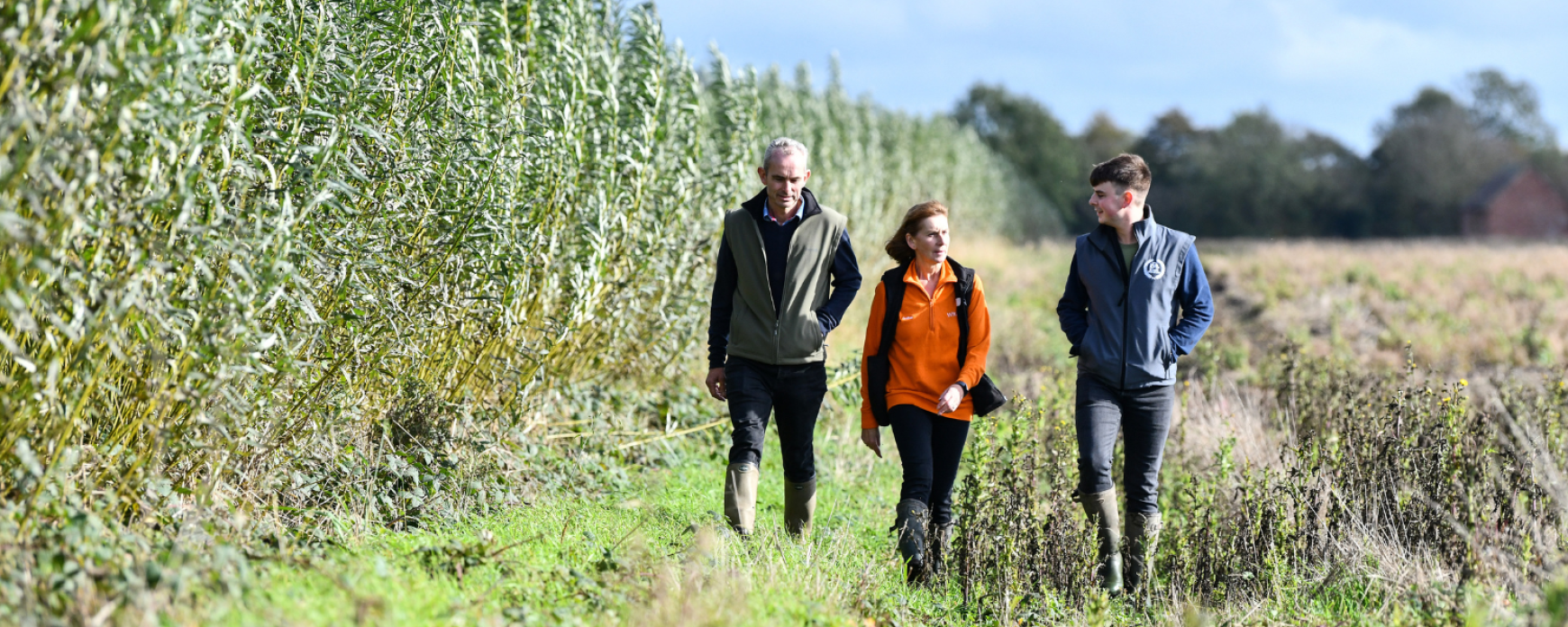Sydney House Farm in Shropshire has transformed part of its operation to focus on willow cultivation, an innovative move toward environmental sustainability. Led by the Moseley family, the decision to grow willow for biomass stems from practical land management and environmental goals, particularly for low-lying areas on the farm that face regular flooding. Instead of leaving this waterlogged land unproductive, the farm found an ideal solution in willow, which not only thrives in damp conditions but also serves as a renewable biomass source.
Currently, Sydney House Farm dedicates 60 acres to willow, with varieties like Olef, Kinto, Tordis, Toza, and Linear. Around 20 acres of this are harvested annually, producing approximately 1,000 tonnes of biomass. The farm has partnered with a local woodchip supplier that specialises in biomass boilers, creating a steady market for their crop while contributing to regional green energy initiatives.
Isabel Moseley explains the shift: “Some of our land was non-viable for arable crops. Flooding or excessive moisture made it impossible to plant, let alone harvest. Willow, however, thrives in these conditions and has turned what was once unusable land into a valuable resource.”
The recent increase in heavy rainfall has underscored the advantages of willow, with the plants serving as a natural buffer against flooding, absorbing excess water and preventing further damage to surrounding fields.
However, willow cultivation presents unique challenges, especially around the timing of harvesting and storage. Initially, the Moseleys tried harvesting in November and December, but the fields were often too wet, making access difficult. By shifting the harvest to March, they have found a more efficient process that minimizes field damage and maximises yield.
The farm’s exploration into biomass started with hopes of using the willow in their broiler chicken unit. However, older boiler technology proved incompatible. In the earlier years it was a challenge knowing who and where to sell it on to, but resources like Envirocrops.com not only help identify the best biomass crops for specific land types and climate conditions, but also helps find local marketplaces and buyers for willow and similar biomass products.
The move to biomass reflects the farm’s commitment to sustainable land use, demonstrating how innovation in crop choice can contribute to both environmental goals and financial resilience. Willow is well-suited to non-arable land, transforming otherwise unproductive areas into eco-friendly assets that contribute to the farm’s income and environmental sustainability goals.
Sydney House Farm’s success with willow showcases the potential of biomass crops in rural business diversification. For farms facing land-use challenges, especially in flood-prone areas, willow offers a dual benefit: it’s both an effective use of non-arable land and a contributor to the local bioenergy market, aligning with broader Net Zero objectives.
Explore the Possibilities of Biomass Production!
Envirocrops.com provides valuable guidance on market access and crop potential, helping landowners like the Moseleys identify regional buyers for biomass, making it easier to establish a reliable customer base for willow and other sustainable crops. This resource allows farmers to connect directly with local businesses that use biomass for eco-friendly energy solutions, creating opportunities to keep the sales and benefits within the community.


